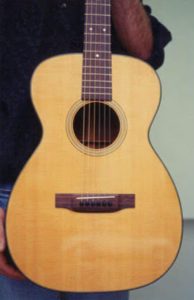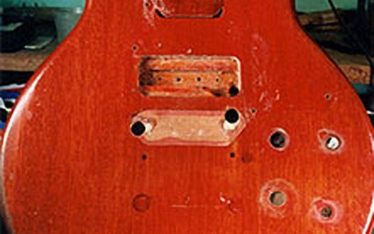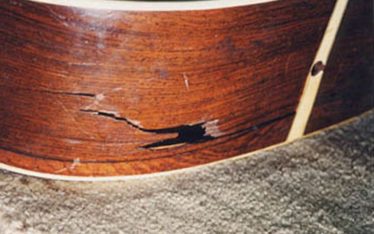Acoustic Guitar | Martin 0-18, 1936
The guitar top was beyond repair
This guitar had many cracks that had been poorly repaired, many new cracks on top, and the top had been sanded very thin and unevenly. It was beyond repair. Some guitars I encounter are in mint condition even though they are more than 100 years old. It all depends on how the instrument has been treated.
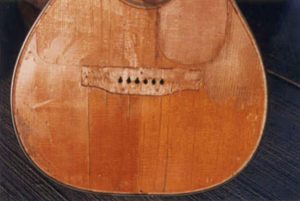
Planning a minimum repair
The top was hopeless in this case, but the rest of the guitar was not in bad condition. The tortoise-type binding was in good shape, and because it is difficult to get the same type of material anyway, we decided to replace only the top, while keeping the original binding.
The top had to be removed without damaging the binding and braces beneath it. First, I had to run the router through the top just inside of the binding down to the level of the lining. I cut the top between the main braces because I didn’t have to save the original top in this case.
Making a template for the top
The next step was the most critical one in this repair. I had to make a template for the new top using Plexiglass that fit perfectly inside of the binding. Actually, the template had to be 99% complete before the top was removed. After the top was completely removed, the template had to be fitted carefully with fine adjustments.
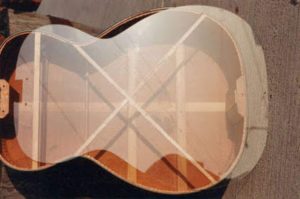
If you remove the braces before you make the template, the shape of the top will be easily deformed because the side becomes unstable. For example, if the waist goes in or out by only one millimeter, the neck angle will be changed, and other details like the action or the height of bridge will be quite different. Those changes would make it a completely different guitar.
Installing a new top within the existing binding
I ordered a new ready-made top from Martin for this job. I then shaped the new top using the template, shaped all the braces, and then installed the new top.
This is an AAA top, which had been in stock at the Martin factory for more than 20 years.
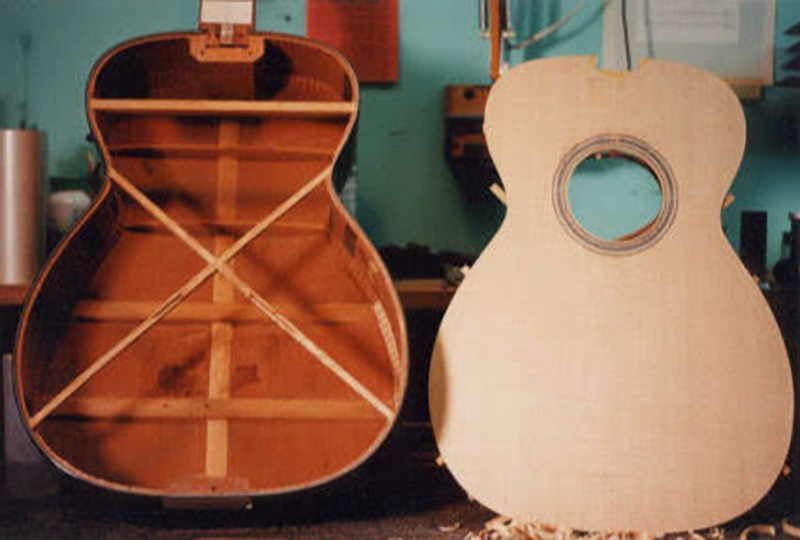
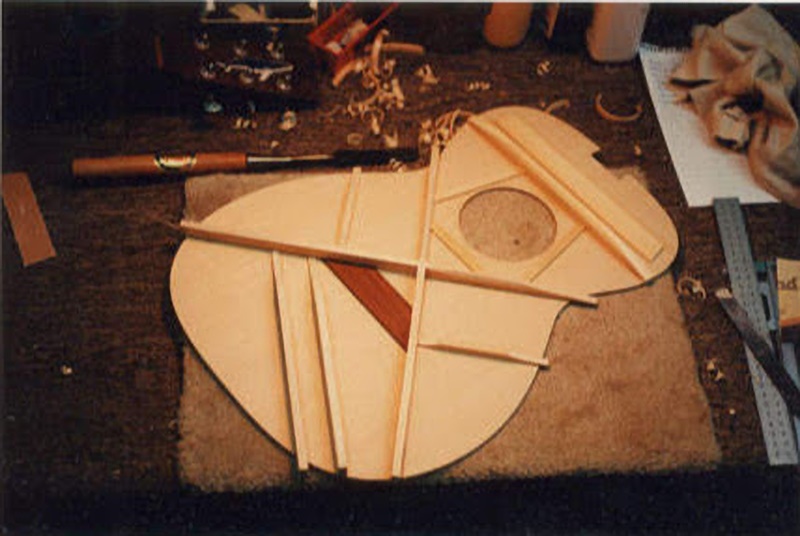
When making a guitar, you usually glue the binding after gluing the top and sides. It is extremely hard to do this job in a different order. For example, it is easy to write one black letter on white paper by brush, like in calligraphy, but it is not easy to make exactly the same black letter on black paper using white paint.
Each repair case is different, so a technique in one situation may not be always used in another. But in this case, with the exception of the top, since the rest of the guitar was in good condition, I was able to use this technique and got really good results.
After the repair...
The fretboard and bridge were glued on after the top was finished. The guitar was beautifully reborn, and the owner planned to give it to his son as part of his inheritance.
